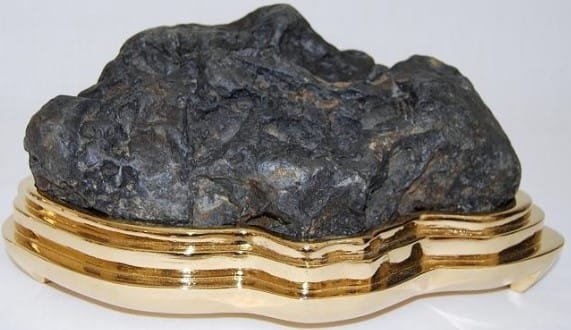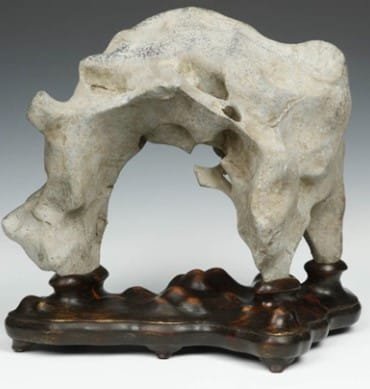Have you ever admired natural rock formations?
A lot of places around the world have naturally-occurring rock formations that are not just beautiful but also look unrealistic.
Take the Table Leg Rock found off the coast of Camel Mountain in China or the Natural Rock Arches in Bryce Canyon National Park? These are naturally-occurring landscapes that look too incredible to be true.
Don’t you know that you can recreate this lovely natural formation in your home using a technique known as the Gongshi?
Gongshi is also known as scholar’s rocks and are naturally-shaped rocks available in a variety of shapes and sizes.
Gongshi makes use of ancient Chinese techniques as well as the Japanese simplicity and minimalistic flair.
if you are looking forward to improving your bonsai garden, you may add gongshi to your design. It’s so easy now and we’ll show you how.
What is Gongshi?
Gongshi is of any color, size and usually with contrasting colors. A Gongshi stone can be from small, medium-sized or very large stones.
In fact, you can find Gongshi rocks that can weigh hundreds of pounds!
Gongshi is also a collective term for stones that are used in traditional gardens in Chinese parks, homes, and temples.
A brief history of Gongshi
The use of Gongshi started during the Tang dynasty. The rocks that were used during this time had four specific qualities: thinness or the shou, perforations or the lou, openness or the tou and wrinkling or zhou.

Image Source: Korean Viewing Stones
Gongshi also influenced the development of the suseok in Korea and the suiseki in Japanese.
Instead of scholar’s rocks, Koreans referred to their rock formations as suseok or viewing rocks. Suseok rocks are naturally-occurring and are treasured in most homes, temples, and buildings. Suseok are in a wide variety of colors and sizes
Meanwhile, suiseki in Japan started during the reign of Empress Suiko. These were presented on a wooden base or on a waterproof tray or bowl.
Suiseki are unlike stones that are naturally found in nature but are expressive stones with a special shape, texture, and color.
How to add Gongshi with Bonsai?
Just imagine having a lovely Gongshi in your bonsai garden!
Not only will your garden look dramatic but will also be able to create a natural, tranquil and interesting spot in your home as well.
Now there are two ways to incorporate Gongshi with Bonsai in your garden
You can add a Gongshi as featured rock sculpture in your garden. You may also grow a Bonsai a la seki-joju or a tree growing inside or on rocks. A seki-joju is a dramatic bonsai formation that is a challenge to make even for seasoned bonsai growers.
How a seki-joju is made

Image Source: Bonsai Bark
Bonsai rock planting is a skillful form of art that makes use of selected rock formations and a choice of bonsai tree species to recreate a seki-joju or trees growing in rocks.
With a seki-joju, you can make almost any kind of landscape. How about an ancient Chinese setting by the sea or a glorious jungle formation with lush bonsai plants?
Tip: The key to creating the perfect gongshi and bonsai is to find the best tree that will grow with your rock.
Finding the ideal rock and tree
Gongshi is all about finding the right materials to create a flawless design. The very first thing is to look for a suitable rock.
The ideal one should have holes and cracks where the bonsai could grow in and around the stone.
When it comes to the ideal tree to use for Gongshi, the most common is pine. Plant the trees in or around rocks during early spring.
The ideal tree should be healthy and should have long roots to be able to grip the rocks better.

Image Source: Fine Art America
Grow your selected tree in a large container for at least a year so that this can develop longer and stronger roots.
Use akdama and garden soil at about ½ and ½. This is the perfect combination for growing bonsai in rocks.
Step by step instructions for gongshi and bonsai
- Cover the watering hole of the pot with a wire mesh screen. This prevents the soil from draining from the hole.
- Place the selected rocks inside a pot. Use strong glue to secure it at the bottom of the pot.
- Use a few pieces of wire to the rock using the strong glue. This is where the tree will attach to the rock.
- Attach the tree on the rock using the wires. Use a pair of pliers to secure the wires.
- Cover the pot with soil. Do not overfill the pot; allow a few centimeters from the edge of the pot to keep the water inside the pot.
- Water daily to prevent drying of the soil. Keep this in a sunny spot in your yard.
- Prune the tree after planting. Pruning will reduce the demand for much-needed nutrients from the plant’s roots.
Remember the following
Your Gongshi and bonsai will need good fertilizer about a month after planting. Don’t put fertilizer right after planting because the tree still has enough nutrients from the soil mixture.
After a month, the tree would have depleted the amount of nutrients in the soil so this is the best time to do so.

Image Source: YouTube
Can you plant more trees in one platter?
Yes, as long as these trees already have long roots. These need to be attached steadily on the rock or rocks by more wires if possible.
Where to find the right rocks?
A local garden store may have just the right rock for your Gongshi project. If you can’t find a good rock from a local shop, you might have more luck online.
And what about trees?
You may find healthy bonsai trees from local shops and also from online bonsai shops.
Have a wonderful time growing your own Gongshi and Bonsai plants at home.


